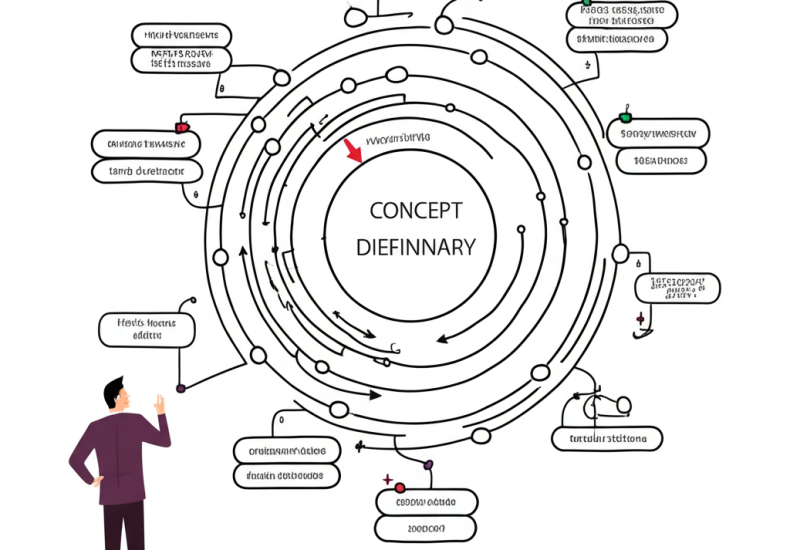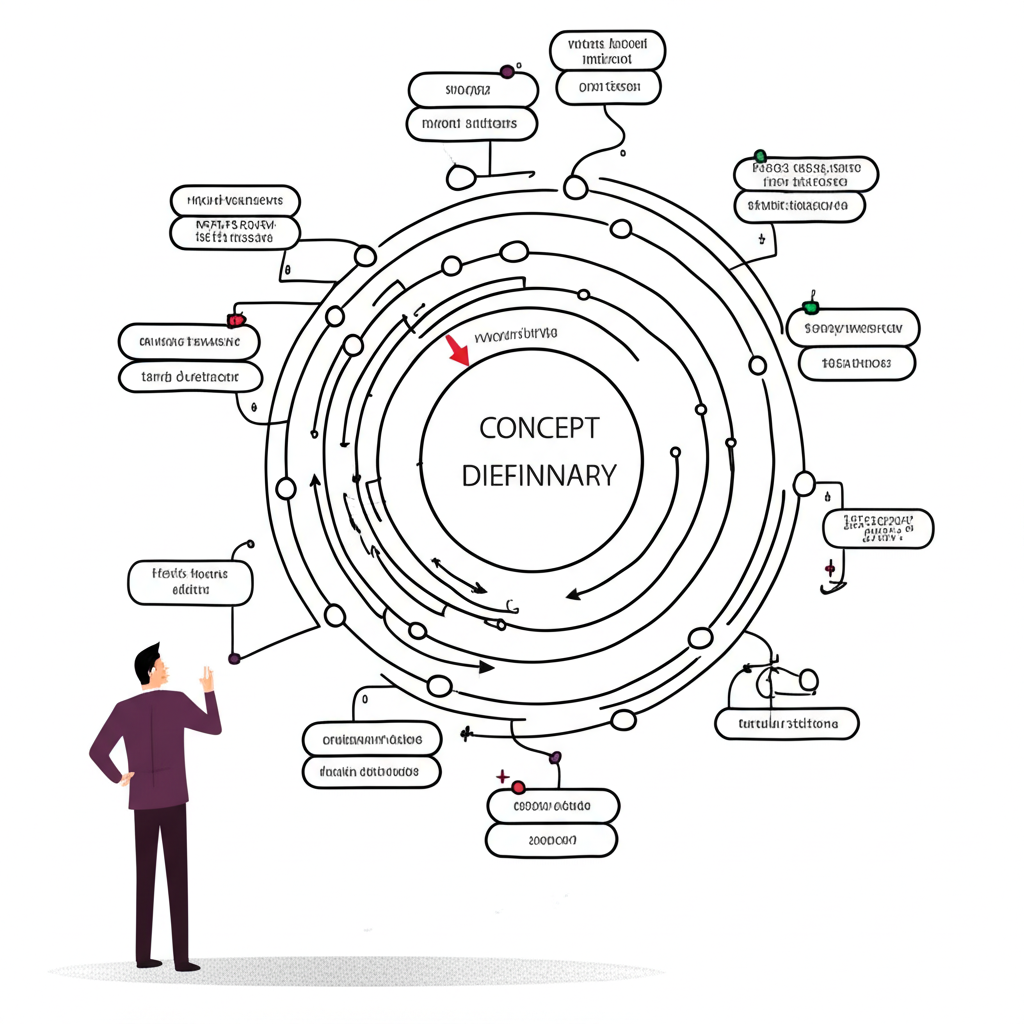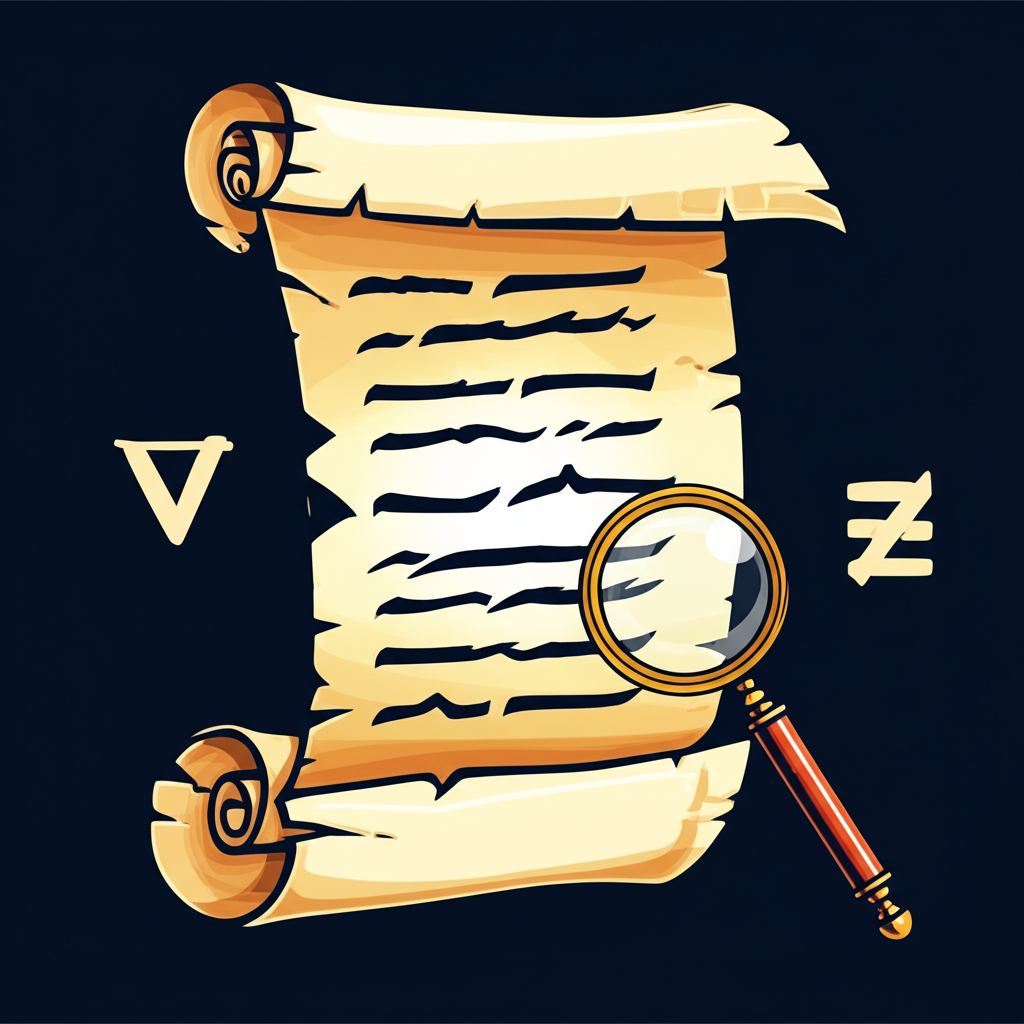
Extended Definition Meaning: 5 Essential Methods to Master Complex Concepts
Table of Contents
ToggleIntroduction: Understanding the Core of an Extended Definition

When you come across a term that feels vague or layered—whether in a classroom, a boardroom, or a public debate—your first move might be to check a dictionary. But more often than not, a one-sentence definition doesn’t capture the full weight of what a word truly means in context. This gap is where the extended definition becomes essential. It’s not just about adding more words; it’s about deepening understanding. An extended definition unpacks a concept from multiple angles—its history, usage, implications, and nuances—offering a comprehensive picture that a simple lexical entry simply can’t. It functions as a rhetorical tool that enables writers and speakers to clarify, persuade, and explore with greater precision. Whether you’re crafting an academic paper, delivering a keynote speech, or defining policy terms, mastering this form empowers you to communicate complex ideas with clarity and authority.
Why Are Extended Definitions Essential? Purpose and Impact

Extended definitions are far more than academic formalities—they are vital instruments for meaningful communication in real-world contexts. Their strategic use transforms abstract or contested ideas into shared knowledge, bridging gaps in understanding across disciplines and audiences. Consider a policy debate about “equity” versus “equality.” Without a clear, layered definition, participants may talk past each other, assuming shared meaning where none exists. An extended definition prevents such misalignment by serving several powerful functions.
First, it clarifies ambiguous or complex concepts. Terms like “artificial intelligence,” “cultural appropriation,” or “net neutrality” carry different meanings in different circles. An extended definition grounds these terms in a specific context, detailing what the writer intends and why. This precision reduces confusion and strengthens the foundation of any discussion.
Second, it serves as a persuasive device. How you define a term can shape how people think about it. For instance, defining “freedom” as personal autonomy versus collective responsibility leads to entirely different political conclusions. By constructing a thoughtful, well-supported definition, you set the stage for the argument that follows.
Third, it enables deep intellectual inquiry. Rather than accepting surface-level meanings, an extended definition invites exploration—of historical roots, cultural shifts, ethical dimensions, and practical applications. This kind of analysis fosters critical thinking and reveals insights that might otherwise remain hidden.
Additionally, extended definitions help establish common ground. In collaborative environments—academic research teams, interdisciplinary projects, or public forums—ensuring everyone interprets key terms the same way is crucial. A shared definition creates a stable platform for dialogue and decision-making.
Finally, crafting a thorough definition enhances your credibility. It signals that you’ve engaged deeply with the subject, considered its complexities, and aren’t relying on assumptions. This attention to detail builds trust with your audience, whether they’re readers, students, or stakeholders.
Key Methods for Developing an Extended Definition

To move beyond a basic explanation, writers draw from a toolkit of rhetorical strategies. These methods allow for a richer, more textured exploration of a term. Using them in combination—rather than in isolation—creates a multidimensional understanding that resonates with readers.
Etymology (Word Origin and History)
Language evolves, and so do the meanings of words. Tracing a term’s etymology reveals how its meaning has shifted over time and what cultural values it carries. Take “education,” derived from the Latin *educare*, meaning “to bring up or rear,” and *educere*, “to lead forth.” These roots suggest that education isn’t just about accumulating knowledge, but about drawing out potential. Understanding such origins adds depth and context, helping readers grasp not just what a word means now, but how it came to mean that.
Negation (Defining by What It Is Not)
Sometimes, the clearest way to define something is to say what it isn’t. This method is especially useful for terms that are commonly misunderstood. For example, “resilience” is often mistaken for toughness or emotional suppression. But a more accurate extended definition might emphasize that resilience is not the absence of struggle, but the capacity to adapt and recover from adversity. By eliminating misconceptions, negation sharpens the focus and clarifies boundaries.
Examples and Illustrations
Abstract ideas become tangible when anchored in real-life situations. A definition of “integrity” gains strength when illustrated with a story of a scientist who publishes flawed data despite pressure to hide it. Similarly, explaining “microaggressions” through everyday interactions—like being asked “Where are you *really* from?”—makes the concept accessible and memorable. These concrete instances ground theoretical ideas in lived experience.
Comparison and Contrast
Placing a term beside similar or opposing concepts highlights its unique qualities. For instance, comparing “empathy” and “sympathy” shows that empathy involves feeling *with* someone, while sympathy is feeling *for* them. Contrasting “democracy” with “authoritarianism” underscores values like participation, transparency, and accountability. These comparisons help readers differentiate subtle but significant distinctions.
Classification (Identifying the Class and Differentiation)
This method situates a term within a broader category and then specifies what sets it apart. For example, “podcast” belongs to the category of digital media, but it is differentiated by its episodic format, on-demand access, and audio-only delivery. This approach provides a logical framework—first identifying the general type (genus), then the unique traits (differentia)—making complex ideas easier to organize and understand.
Cause and Effect
Some definitions gain clarity by exploring origins or consequences. Defining “urban sprawl,” for instance, becomes more meaningful when you examine its causes—such as population growth and car-dependent planning—and its effects, including environmental degradation and increased infrastructure costs. This cause-and-effect lens reveals the dynamic nature of concepts and their broader societal impact.
Function (How It Works or Is Used)
Understanding what something *does* can be central to defining it. A “central bank” can be defined by its function: managing monetary policy, regulating financial institutions, and maintaining economic stability. Similarly, defining “peer review” by its role in ensuring academic rigor clarifies its importance in scholarly publishing. Function-based definitions are especially effective for processes, roles, and systems.
Analysis (Breaking Down into Components)
Complex concepts often consist of interrelated parts. Analyzing them piece by piece leads to a fuller understanding. For example, “globalization” can be broken down into economic integration, cultural exchange, technological connectivity, and political cooperation. By dissecting the whole into its elements, this method allows for systematic exploration and deeper comprehension.
Structuring Your Extended Definition Essay or Speech

Even the most insightful ideas can fall flat without a clear structure. A well-organized extended definition guides the audience through a logical progression, ensuring each part builds on the last.
The Introduction: Setting the Context
Begin by drawing the reader in—perhaps with a surprising fact, a provocative question, or a relatable scenario. Introduce the term you’ll be defining and offer a preliminary, working definition. This sets the stage. Then, preview the methods you’ll use to expand the definition. For example, “This essay will explore the concept of ‘digital literacy’ through its historical development, functional applications, and distinctions from traditional literacy.” This roadmap prepares the audience for the journey ahead.
The Body: Developing Your Definition with Detail
Each method of development deserves its own focused section. Start with a topic sentence that signals which approach you’re using—“One way to understand resilience is through its etymological roots”—then provide explanation, evidence, and examples. Use smooth transitions like “Having examined its origins, we now turn to what resilience is not” to maintain flow. While there’s no single correct order, many writers find it effective to begin with broader context (etymology, classification) before moving to specific applications (examples, function). The key is coherence: each section should feel like a natural step forward.
The Conclusion: Reinforcing Understanding
The conclusion isn’t just a summary—it’s a synthesis. Bring together the insights from each section to present a unified, enriched understanding of the term. Reiterate its significance in the current context and reflect on its broader implications. If the definition supports an argument, this is the place to issue a call to action or suggest further inquiry. End with a strong closing thought that leaves a lasting impression, such as how redefining a concept can transform the way we see the world.
Extended Definition vs. Related Concepts: Clarifying Distinctions
Understanding what an extended definition is requires understanding what it is not. Comparing it to related forms of definition helps clarify its unique role and depth.
Simple (Lexical) vs. Extended Definition
A simple, or lexical, definition is concise and functional—ideal for quick reference. For example: “Sustainability: the ability to be maintained at a certain rate or level.” But this doesn’t explain the environmental, economic, and social dimensions of the term. An extended definition expands on this, exploring sustainable development goals, historical shifts in environmental policy, and real-world applications in business and urban planning. While a lexical definition answers “What does it mean?”, an extended definition answers “What does it mean *in context*?” The Purdue OWL’s guide on definition essays highlights how this depth transforms a basic explanation into a compelling rhetorical act.
Extensional vs. Intensional Definition
In logic and philosophy, an **extensional definition** lists the members of a category—e.g., defining “Nobel laureates in Literature” by naming Gabriel García Márquez, Toni Morrison, and Haruki Murakami. An **intensional definition**, by contrast, describes the qualities that define membership—e.g., “a writer who has demonstrated exceptional creativity and influence, as recognized by the Swedish Academy.” Extended definitions often blend both: they may use extensional examples to illustrate intensional qualities, creating a richer, more persuasive account. For deeper insight into these distinctions, the Stanford Encyclopedia of Philosophy on Definitions offers a rigorous exploration of definitional theory.
Stipulative vs. Extended Definition
A **stipulative definition** assigns a specific, often temporary, meaning to a term for a particular purpose. For instance, a researcher might stipulate that “remote work” in their study refers only to fully distributed teams with no physical office. An extended definition can then expand on this stipulation—explaining why this narrow scope is useful, how it differs from hybrid models, and what implications it has for productivity and team cohesion. The extended form justifies and elaborates the stipulation, turning a narrow definition into a robust analytical tool.
| Definition Type | Primary Approach | Purpose | Typical Length |
|---|---|---|---|
| **Simple (Lexical) Definition** | Brief, direct statement of meaning | Quick understanding, dictionary entry | One sentence |
| **Extended Definition** | In-depth, multifaceted exploration | Comprehensive understanding, context, nuance, persuasion | Multiple paragraphs to entire essay |
| **Extensional Definition** | Listing examples or instances | Clarify by showing what a term applies to | List of items |
| **Intensional Definition** | Specifying properties or qualities | Clarify by stating inherent characteristics | Descriptive statement |
| **Stipulative Definition** | Assigning a new or specific meaning for a context | Introduce new concepts, ensure precision in a specific discourse | Typically one sentence, then often elaborated via extended definition |
Practical Applications: Where Extended Definitions Shine (Including EAPP)
Extended definitions aren’t confined to theory—they are practical tools used across disciplines and professions.
Academic Essays and Research Papers
In scholarly writing, defining key terms is foundational. A paper on “intersectionality” must clarify whether it refers to Kimberlé Crenshaw’s original legal framework or broader applications in sociology and gender studies. Without this clarity, arguments can become muddled. Extended definitions anchor the discussion, ensuring that readers interpret central concepts as intended. This is especially important in interdisciplinary work, where terms may carry different meanings across fields.
Professional Reports and Technical Writing
In business and technical fields, precision prevents costly misunderstandings. Imagine a report discussing “blockchain” without clarifying whether it refers to cryptocurrency, supply chain tracking, or smart contracts. An extended definition ensures all stakeholders—executives, engineers, investors—share the same understanding. Similarly, defining “KPI” (key performance indicator) in a marketing report with specific examples helps align team goals and evaluation criteria.
Public Speaking and Presentations
In speeches, time is limited, but clarity is non-negotiable. A leader discussing “organizational change” must define what that means in their context—mergers, cultural shifts, digital transformation? Taking a few minutes to offer an extended definition ensures the audience isn’t left guessing. Visual aids, like infographics or analogies, can enhance this process, making abstract ideas more digestible during live delivery.
Extended Definition in EAPP (English for Academic and Professional Purposes)
In EAPP programs, students develop the ability to define terms with depth and precision—a skill critical for success in higher education and global workplaces. Assignments often require students to define concepts like “critical thinking,” “academic honesty,” or “inclusive leadership” using multiple methods. For example, an extended definition of “plagiarism” might include its legal and ethical implications, historical context in academic publishing, distinctions from paraphrasing, and real-world consequences. This approach goes beyond memorization, fostering analytical and communicative competence. As noted in educational resources like Lumen Learning on Types of Definitions, such exercises build the rhetorical flexibility needed for effective academic and professional expression.
Conclusion: The Enduring Value of Defining with Depth
An extended definition is more than a writing technique—it’s a mindset. It reflects a commitment to clarity, precision, and intellectual honesty. In a world saturated with oversimplified soundbites and contested meanings, the ability to define a concept thoroughly is a powerful act. It allows you to cut through ambiguity, shape understanding, and engage with complexity rather than avoid it. Whether you’re writing a thesis, leading a team, or participating in civic discourse, the extended definition equips you with the tools to communicate with impact. It transforms vague terms into shared knowledge, turning potential confusion into connection. In doing so, it affirms one of the most essential functions of language: not just to name things, but to understand them deeply.
Frequently Asked Questions About Extended Definitions
What is an extended definition and why is it important in effective communication?
An extended definition is an in-depth, multifaceted explanation of a term, concept, or idea that goes beyond a simple dictionary entry. It is important because it clarifies complex or ambiguous terms, persuades an audience by shaping their understanding, explores nuances, establishes common ground, and enhances the writer’s or speaker’s credibility by demonstrating thorough understanding.
What are the most common and effective methods for developing an extended definition?
The most common methods include:
- Etymology: Tracing the word’s origin and history.
- Negation: Defining by what the term is not.
- Examples and Illustrations: Providing concrete instances.
- Comparison and Contrast: Showing similarities and differences with other terms.
- Classification: Placing the term in a broader category and specifying its unique features.
- Cause and Effect: Explaining its origins or consequences.
- Function: Describing its purpose or how it works.
- Analysis: Breaking the concept into its components.
Can you provide a practical example of a well-crafted extended definition?
Certainly. An extended definition of “empathy” might begin with a basic definition, then delve into its etymology (from Greek “empatheia,” meaning “in-feeling”), differentiate it from “sympathy” (negation), provide examples of empathetic responses in various scenarios, analyze its psychological components (emotional resonance, perspective-taking), and discuss its function in fostering strong human connections (cause and effect). This layered approach offers a complete picture.
How does an extended definition essay differ in structure from a standard argumentative essay?
While both have introductions, body paragraphs, and conclusions, an argumentative essay aims to prove a thesis using evidence and reasoning. An extended definition essay, conversely, focuses on fully explaining and exploring a single term or concept. Its body paragraphs are organized around the various methods of definition (etymology, examples, etc.) rather than distinct arguments or counterarguments.
What is the key distinction between an extensional definition and an extended definition?
An extensional definition defines a term by listing all the specific items or instances it refers to (e.g., “Planets: Mercury, Venus, Earth…”). An extended definition is a rhetorical strategy that uses multiple methods to provide a comprehensive and in-depth explanation of a concept, often integrating extensional examples alongside other descriptive elements.
How is the concept of extended definition applied in specific academic contexts like EAPP?
In English for Academic and Professional Purposes (EAPP), extended definitions are crucial for clarifying specialized terminology central to academic disciplines or professional fields. Students might be tasked with defining concepts like “critical literacy,” “sustainable agriculture,” or “market economy” in depth, using various rhetorical methods to demonstrate comprehensive understanding and prepare for rigorous academic and professional communication.
What are the essential components required for a comprehensive extended definition?
A comprehensive extended definition typically requires:
- An initial working definition.
- Multiple development methods (e.g., etymology, examples, comparison).
- Contextual information.
- Clarification of what the term is not (negation).
- Discussion of its significance or implications.
- A logical structure with clear transitions.
When is it most appropriate and beneficial to use an extended definition instead of a simple one?
It is most appropriate when:
- The term is complex, abstract, or easily misunderstood.
- The audience is unfamiliar with the term or its nuances.
- The definition forms a foundational part of a larger argument or discussion.
- There is a need to persuade or influence the audience’s understanding of a concept.
- The goal is to explore the term’s full implications and significance.
What are some common mistakes or pitfalls to avoid when writing an extended definition?
Common pitfalls include:
- Relying solely on a dictionary definition.
- Failing to provide enough detail or examples.
- Losing focus on the central term.
- Using overly complex language without adequate explanation.
- Failing to distinguish the term from closely related concepts.
- Disorganized structure or lack of clear transitions.
How do elements like etymology and negation contribute to a deeper understanding in an extended definition?
Etymology provides historical and linguistic context, showing how a word’s meaning has evolved and what its roots imply, thus enriching its contemporary understanding. Negation clarifies a term by drawing boundaries, explaining what it is *not*, which helps eliminate common misconceptions and sharpens the concept’s unique identity.
What role does comparison and contrast play in clarifying a complex term?
Comparison and contrast are powerful tools for clarifying complex terms because they highlight similarities with related concepts while emphasizing differences from others. This method helps the audience understand what makes the defined term unique and how it fits into or stands apart from a broader conceptual landscape, thereby providing a clearer mental map.
Can an extended definition be used effectively in both written and spoken contexts?
Yes, absolutely. While commonly associated with essays and reports, an extended definition is highly effective in spoken contexts such as speeches, lectures, and presentations. It ensures the audience’s comprehension of central concepts, builds the speaker’s credibility, and allows for a more nuanced and impactful delivery of information, much like in written form.
You may also like
Calendar
| 一 | 二 | 三 | 四 | 五 | 六 | 日 |
|---|---|---|---|---|---|---|
| 1 | 2 | 3 | 4 | 5 | 6 | 7 |
| 8 | 9 | 10 | 11 | 12 | 13 | 14 |
| 15 | 16 | 17 | 18 | 19 | 20 | 21 |
| 22 | 23 | 24 | 25 | 26 | 27 | 28 |
| 29 | 30 | 31 | ||||
發佈留言
很抱歉,必須登入網站才能發佈留言。